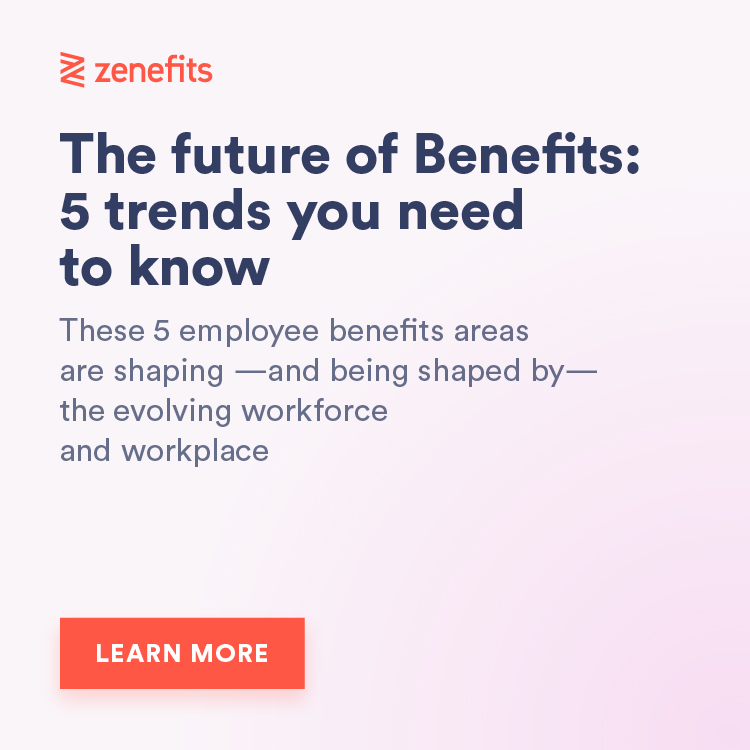Should your business add cryptocurrency to your 401(k) plan? Read this first to find out more about crypto and retirement plans.

Here's what you need to know:
-
Crypto assets are known for instant gains and losses — not long-term holdings — but some employers are eager to take the chance and offer something different for retirement savings plans
-
There are pros and cons of adding crypto into your 401(k)
-
Digital assets and cryptocurrency investments are still so new that regulations are often not clear
-
As a result, it is challenging to create balanced workplace retirement plans with digital assets
-
While there is a huge demand for cryptocurrency due to the potentially high returns, there are significant risks to retirement savers
When looking to differentiate their compensation packages and attract top talent, many HR managers and business owners are asking themselves a question that would have been laughed at 5 years ago:
Should your 401(k) plan offer cryptocurrency investments?
Since 2018, there has been a 237% increase in individuals owning Bitcoin. One in every 5 Americans owns a share of Bitcoin, and 80% of individuals want to learn more about cryptocurrency.
However, when it comes to workplace retirement plans, many employers are skeptical about whether or not a cryptocurrency investment option is appropriate. After all, crypto assets are known for instant gains and losses — not long-term holdings. But amidst the Great Resignation, some employers are eager to take the chance and offer something different for retirement savings.
What are cryptocurrencies and blockchains?
A cryptocurrency is a specific type of digital currency. Unlike the dollars and cents transferred via PayPal or through ACH, a cryptocurrency is traded on a blockchain, or a digital ledger that cannot be edited. A blockchain is created and saved on a network of multiple — often thousands — of nodes, or servers.
As a result, many blockchains and cryptocurrencies are decentralized. This means a financial institution or bank does not own or manage the blockchain. Crypto simply exists in your wallet or on an exchange platform. Mathematical equations generate new crypto tokens and ensure that tokens are exchanged when appropriate.
Ideally, the individual who purchased the cryptocurrency investment also owns and manages them without a 3rd party, whether that be Bitcoin, Ethereum, or another coin or token.
However, world governments and financial regulators consider crypto to be a digital asset, not a real currency. While some merchants accept Bitcoin or other cryptocurrencies as payment, most people use crypto to simply hold value. In this respect, it is very similar to buying individual stocks.
For example, you believe in company X and they have created a cryptocurrency token. You hold that token because you believe it will bring value as the company becomes more valuable and people use the token to access the company’s services. Therefore, you purchase these tokens and hold them in a digital wallet or on a currency exchange website.
In some cases, no company is linked to a specific token or cryptocurrency. The most popular example of this is Bitcoin.
What are the pros and cons of adding crypto into your 401(k)?
For those who manage employee benefits, it’s important to know that the primary benefit of adding cryptocurrency into a 401(k) plan is also its downfall: its high volatility. The value of cryptocurrency can change rapidly, and without warning.
The primary benefit of adding cryptocurrency into a 401(k) plan is also its downfall: its high volatility.
Most assets in the traditional market provide limited returns. You may get 12% on a stock or index fund if you’re lucky. Buyers can get “safe” government bonds for 1 or 2%. And as a result, it can be difficult for portfolios to keep pace with inflation and market downturns.
In a recent report, Fidelity highlighted the primary benefits of Bitcoin over regular currency to be:
- Durable purchasing power — Unlike dollars or other paper currencies, Bitcoin and other cryptocurrencies are generally fungible, or they can equal the value of another asset. Furthermore, since Bitcoin is finite, the asset becomes more valuable over time.
- Portable — Anyone can use Bitcoin from anywhere in the world with low transfer fees.
- Verifiable — Since all transactions are made on the blockchain, an individual cannot fudge the numbers or alter a transaction. This makes Bitcoin significantly more auditable than cash.
Potential downsides to having crypto in your employee retirement plan
As a new breed of digital assets, cryptocurrencies are volatile. Their value changes rapidly. As a result, an investor can expect potentially high returns at certain points. But they can also take steep declines in value. For example, in 2017 and 2018, Bitcoin lost 80% of its value.
But there are other potential downsides to having this investment option in your employee retirement plan. Some of those reasons include:
Lack of transparency
Crypto investments often attract headlines and hype, without being subject to strict regulations of public companies. As a result, investors do not have the luxury of end-to-end transparency, and it can be difficult for them to analyze whether or not a specific token or crypto asset is a proper investment.
Furthermore, since many cryptocurrencies are decentralized, investors cannot easily hold individuals accountable in case of a breach, theft, coin failure, or scam. To date, there are over 1,000 “dead coins” or failed projects.
Custody concerns
You cannot hold cryptocurrency in a regular brokerage account. Typically, they are stored in a digital wallet or exchange.
There are 2 issues when storing digital assets in both cases. If held in a wallet, the user must not forget the password or login credentials, often called the Master Key or a Seed keyword. When this information is lost, the owner cannot access the wallet, and the money within it is lost as well. However, if the user keeps funds on the exchange, the crypto is susceptible to theft.
Unclear regulation
Digital assets and cryptocurrency investments are still so new that regulations are often not clear. Since guidance and compliance are also always evolving, it’s possible that the regulations when you buy the cryptocurrency may be entirely different when an investor chooses to sell their crypto assets.
As a result, it is challenging to create balanced workplace retirement plans with digital assets.
What’s your biggest 2022 HR challenge that you’d like to resolve
Answer to see the results
Who offers a 401(k) plan with crypto investments?
In May 2022, Fidelity decided to accept cryptocurrency as a part of their 401(k) retirement plans. In this case, the financial institution allows investors to allocate up to 20% of their 401(k) funds into Bitcoin.
These savings will be stored in a digital asset account (DAA), limiting how often the investment option can be traded. In addition, there will be an administrative fee for every Bitcoin trade within the range of $75 to $90 for every $10,000.
So far, this is the only 401(k) plan that includes crypto investments. Time will tell whether or not other fiduciary institutions or brokers will follow suit.
Should you add crypto to your retirement plan?
The U.S. Department of Labor (DOL) advised on March 10, 2022, that investors and fiduciaries should take extreme care when deciding to include crypto in their retirement plans. To assist fiduciary planners and organizations, the organization released compliance assistance when dealing with cryptocurrency.
The fact is, while there is a huge demand for cryptocurrency due to the potentially high returns, there are significant risks to retirement savers.
Unpredictable value loss is a key factor to consider. Not every investor would benefit from the steep volatility, or be able to handle large losses. For employees nearing retirement, a significant loss due to volatility can mean delaying their golden years.
While every employer can choose the investment option they feel is best for their employees, digital assets may not be safe enough as of yet for a regular workplace retirement plan.
There are many benefits to choose from outside your 401(k)
If you aren’t sure whether or not crypto-inclusive retirement plans are right for your employees, that’s OK. There are a number of benefits to choose from outside of your 401(k) plan.
For an inside look into attracting and retaining top talent, check out our Benefits Benchmark Report.







